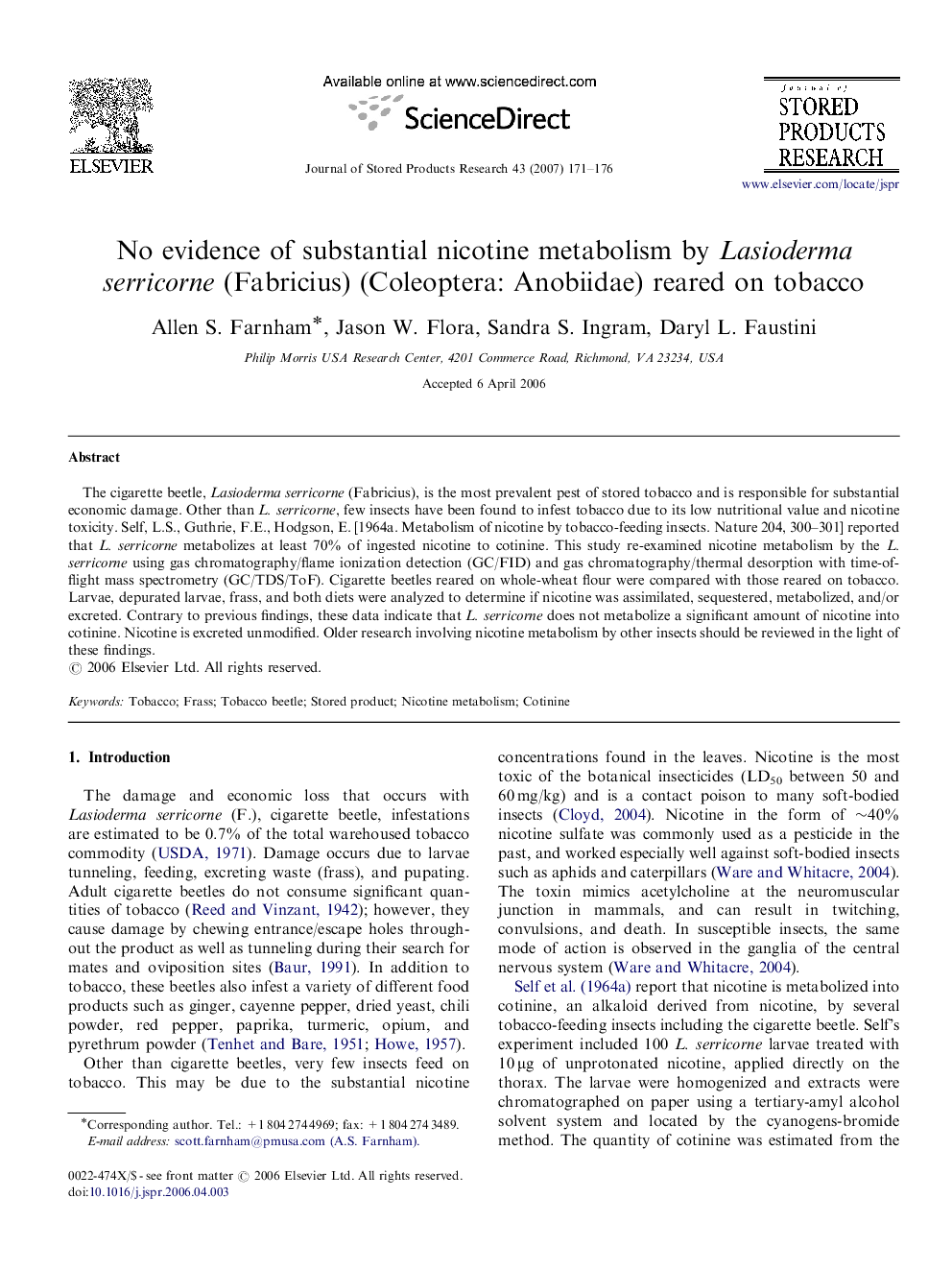| Article ID | Journal | Published Year | Pages | File Type |
|---|---|---|---|---|
| 4517580 | Journal of Stored Products Research | 2007 | 6 Pages |
Abstract
The cigarette beetle, Lasioderma serricorne (Fabricius), is the most prevalent pest of stored tobacco and is responsible for substantial economic damage. Other than L. serricorne, few insects have been found to infest tobacco due to its low nutritional value and nicotine toxicity. Self, L.S., Guthrie, F.E., Hodgson, E. [1964a. Metabolism of nicotine by tobacco-feeding insects. Nature 204, 300-301] reported that L. serricorne metabolizes at least 70% of ingested nicotine to cotinine. This study re-examined nicotine metabolism by the L. serricorne using gas chromatography/flame ionization detection (GC/FID) and gas chromatography/thermal desorption with time-of-flight mass spectrometry (GC/TDS/ToF). Cigarette beetles reared on whole-wheat flour were compared with those reared on tobacco. Larvae, depurated larvae, frass, and both diets were analyzed to determine if nicotine was assimilated, sequestered, metabolized, and/or excreted. Contrary to previous findings, these data indicate that L. serricorne does not metabolize a significant amount of nicotine into cotinine. Nicotine is excreted unmodified. Older research involving nicotine metabolism by other insects should be reviewed in the light of these findings.
Related Topics
Life Sciences
Agricultural and Biological Sciences
Agronomy and Crop Science
Authors
Allen S. Farnham, Jason W. Flora, Sandra S. Ingram, Daryl L. Faustini,
